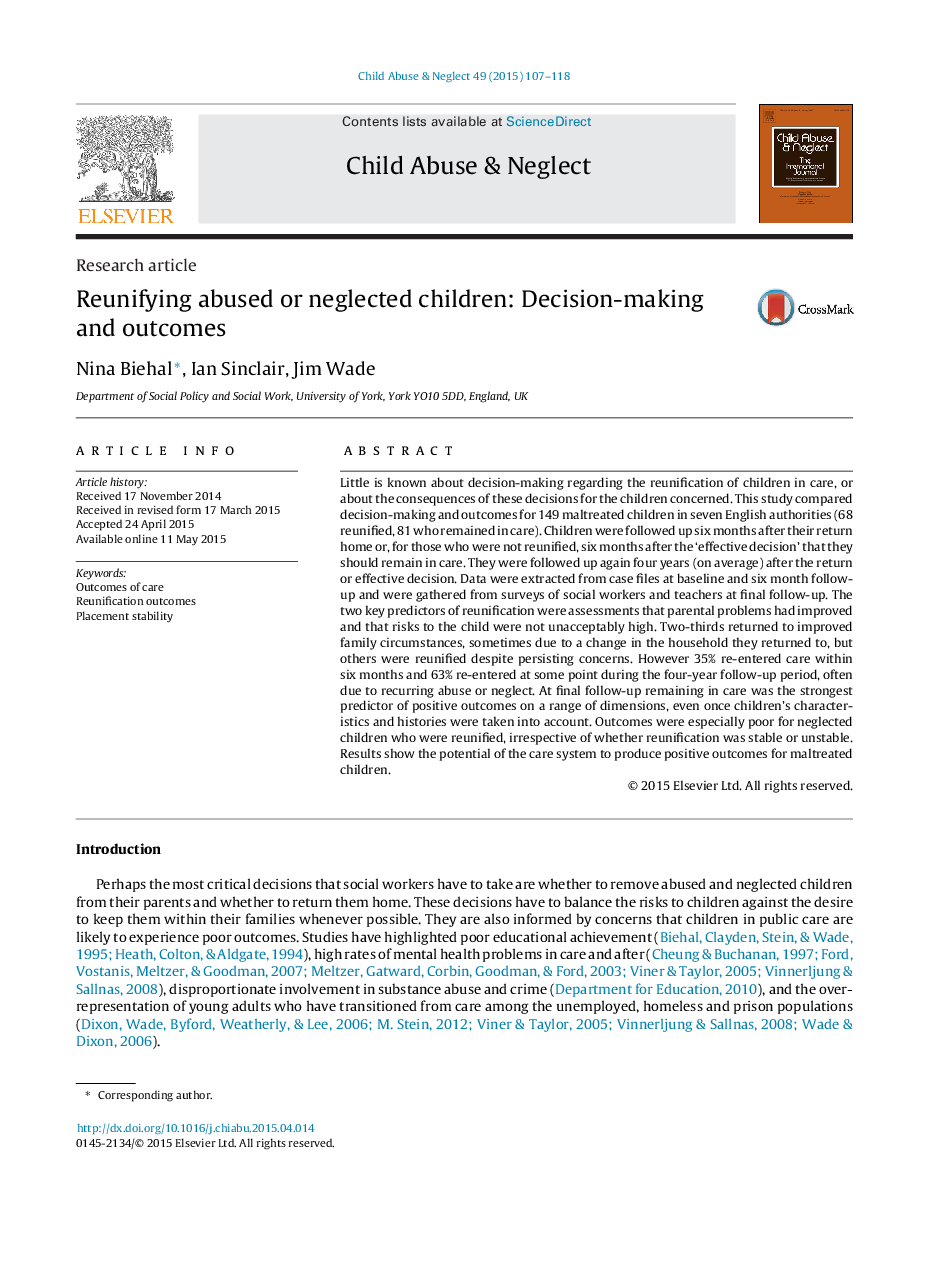| Article ID | Journal | Published Year | Pages | File Type |
|---|---|---|---|---|
| 344639 | Child Abuse & Neglect | 2015 | 12 Pages |
Little is known about decision-making regarding the reunification of children in care, or about the consequences of these decisions for the children concerned. This study compared decision-making and outcomes for 149 maltreated children in seven English authorities (68 reunified, 81 who remained in care). Children were followed up six months after their return home or, for those who were not reunified, six months after the ‘effective decision’ that they should remain in care. They were followed up again four years (on average) after the return or effective decision. Data were extracted from case files at baseline and six month follow-up and were gathered from surveys of social workers and teachers at final follow-up. The two key predictors of reunification were assessments that parental problems had improved and that risks to the child were not unacceptably high. Two-thirds returned to improved family circumstances, sometimes due to a change in the household they returned to, but others were reunified despite persisting concerns. However 35% re-entered care within six months and 63% re-entered at some point during the four-year follow-up period, often due to recurring abuse or neglect. At final follow-up remaining in care was the strongest predictor of positive outcomes on a range of dimensions, even once children's characteristics and histories were taken into account. Outcomes were especially poor for neglected children who were reunified, irrespective of whether reunification was stable or unstable. Results show the potential of the care system to produce positive outcomes for maltreated children.
